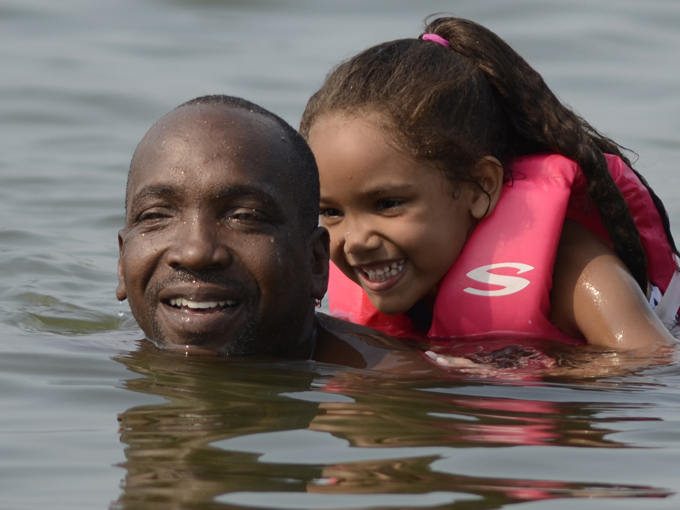Growing up near a lake, I always heard the age-old warning about not swimming less than an hour after eating. All of the adults happened to know a person who had a distant relative who had eaten a four course meal before swimming, got a cramp and needed rescuing.
This popular fable struck fear in the hearts of everyone, even forced us to sit around watching a clock for an hour after eating a hotdog, anticipating the moment when we could jump back in the water.
We were the lucky ones. Some cultures have retold this old wives’ tale and adjusted the waiting period as long as 2 or 3 hours.
So is there any truth to the claim that one must wait an hour after eating to swim? While suffering from a cramp while swimming poses a very real danger to children and adults alike, the popular myth is just that- a very popular myth.

Suffering a cramp after eating has more to do with what type of foods have been eaten, what amounts and the proper care taken to stretch muscles before returning to the water.
The truth behind the fable comes from the idea that after eating the heart has to work harder to provide blood and oxygen flow to the muscles than it normally would without the additional burden of aiding in the digestive process.
The shred of truth to which moms and dads have pointed out has served as the excuse for sitting on the side of the pool, avoiding even a tiny drop of water from touching your toes out of fear of instant paralysis. However, exercising proper swimming techniques can prevent an aquatic disaster.
It is never a bad idea to take it easy when getting in the water after eating a big meal. Additionally, everyone is encouraged to stretch their muscles before and after doing any kind of workout, even playing in the pool, lake or ocean for any extended amount of time.
Most instructions that lifeguards apply to help those who suffer a cramp while swimming direct them to coach the swimmer to remain calm and float if necessary. If required the muscle should be relaxed and massaged gently to work out any issues with blood flow until it is no longer tense.
Overexertion is the leading cause of muscle cramps and aches, not the half a sandwich that you scarfed down before swimming a hundred laps through 50 foot waves. It is best to know your limits.
Obviously children should always be attended by a lifeguard or supervised by a vigilant adult who is ready to administer aid if the need arises.
So now that you know, we recommend rubbing it mom and dad’s face. The next time the family gets together around the pool or everyone is on vacation, eat an entire chocolate dipped ice cream, and then immediately dive into the water in front of them. When you survive unscathed, let them know what you’ve learned.
Swimming safely is all about responsibility and taking proper precautions, not so much about setting a timer every time you have a snack prior to your plunge.
Jason Goss is an acquatics lifestyle blogger for eLifeguard On Duty




